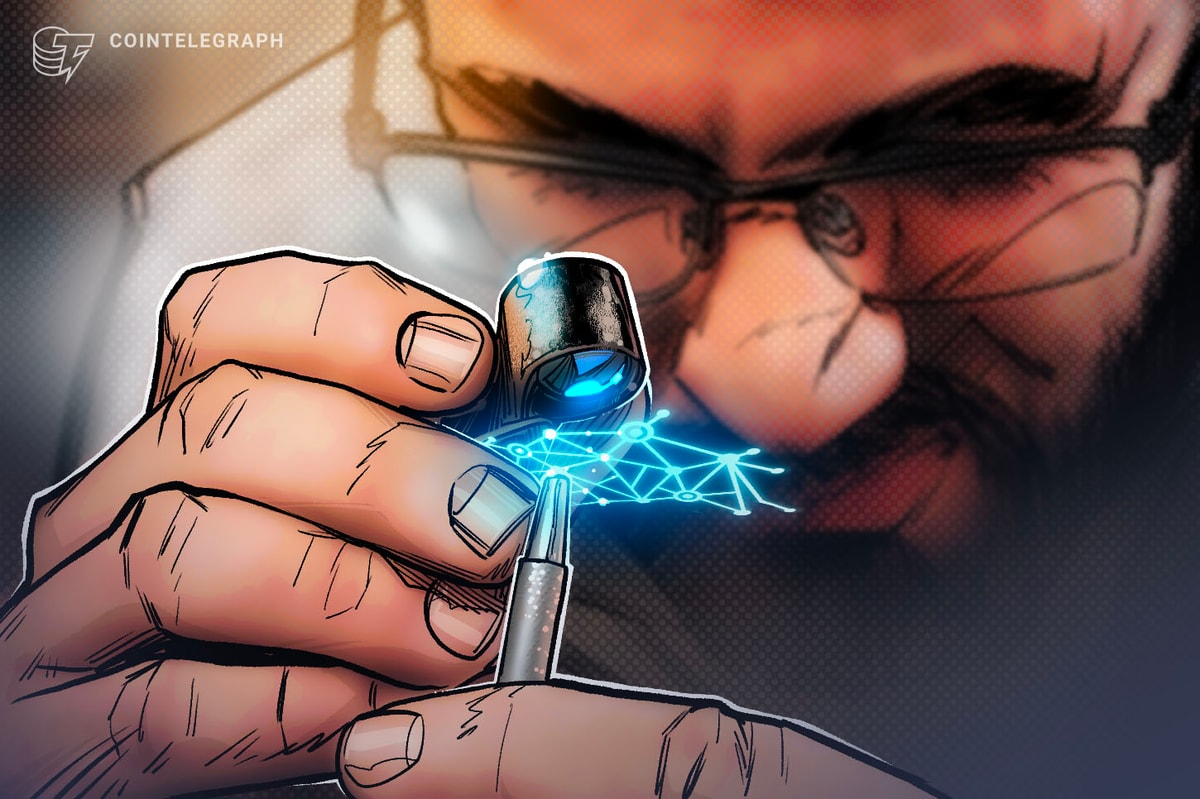As extra establishments discover digital property, the necessity for on-chain analytics platforms has by no means been increased.
Compliance consultants, investigators and regulators make use of these blockchain analytical instruments to raised perceive the patterns and entities in cryptocurrency transactions.
To be taught extra in regards to the instruments and the way they match into broader cryptocurrency adoption, Cointelegraph sat down with Tom Robinson, the co-founder and chief scientist at analytics agency Elliptic; and Eray Akartuna, a senior cryptocurrency menace analyst at Elliptic.
Cointelegraph: What are the standard use circumstances you see for on-chain analytics for institutional shoppers?
Tom Robinson: Anti-Cash Laundering (AML) and sanctions compliance for crypto exchanges and different companies dealing with crypto property: Our crypto transaction and pockets screening instruments assist companies stay compliant with rules and to cut back fraud.
Due diligence on crypto companies: Our Discovery product supplies danger profiles of exchanges and different crypto companies primarily based on evaluation of their blockchain transactions. That is utilized by crypto companies and monetary establishments to realize insights into the companies they’re transacting with.
Journal: ‘Moral responsibility’: Can blockchain really improve trust in AI?
Investigating crypto transactions: Investigator — our blockchain investigations software program — permits graphical exploration of crypto wallets and the transactions between them. Legislation enforcement investigators use this to “observe the cash” and hyperlink prison exercise to people. It’s also utilized by crypto companies to research potential illicit exercise by their prospects.
CT: How is Anti-Cash Laundering in crypto completely different from mainstream AML inside banks for fiat?
TR: The primary distinction is that almost all crypto transactions are seen on the blockchain. This makes it a lot simpler to establish whether or not funds have originated from prison exercise by tracing them utilizing blockchain analytics instruments.
CT: Do you see a task for synthetic intelligence (AI) and machine studying to play inside on-chain analytics? Significantly inside fraud prevention and AML?
Eray Akartuna: Sure, we already use machine studying inside our blockchain analytics merchandise. Nevertheless, it’s crucial to make sure the accuracy of those strategies by intensive testing.
There are specific features of blockchain transactions the place we will use machine studying to grasp or establish sure patterns. Patterns seen on the Bitcoin blockchain might not essentially be the identical as patterns on the Ethereum blockchain; they work in barely other ways. I might level out using heuristics.
There are specific features of the blockchain transactions the place we have now frequent spend that may assist us know whether or not the addresses are owned by a single entity or not — if I wish to establish illicit actions and illicit actors on a blockchain — and establish their pockets addresses.
For example, the North Korean cyber hackers had been utilizing a programmatic method of laundering. The hack was carried out in 2018, the place they used about 113 wallets to disassociate funds from the unique theft in an automatic trend. We might programmatically analyze the timestamps of these particular person transactions to grasp precisely how this automated software program works.
If we’re analyzing darkish internet markets or terrorist entities, and many others., utilizing heuristics may also help us establish if a pockets tackle has been related to a sure illicit entity. We will then use these heuristics to grasp what different pockets addresses can also belong to or be related to that entity.

We’ve acquired a danger rating which inserts into predictive evaluation. Once we have a look at the incoming and outcoming transactions to a cluster of wallets, we will see in the end the place they ended up. Entities recognized as belonging to an trade, a terrorist group or a darkish market may be noticed when they’re transacting with specific entities that we’re specializing in.
Let’s say about 50% of that crypto has gone to a sure darkish internet market; we will really use that to supply a danger rating of how dangerous the pockets is. The chance rating is then utilized by exchanges and banks to determine in the event that they wish to do enterprise with these pockets holders or not.
CT: What are essentially the most complicated issues you’re fixing at Elliptic? Why are they complicated, and why is it vital to unravel them?
TR: Probably the most complicated and vital drawback we have now solved not too long ago is tips on how to establish proceeds of crime in crypto, even once they have been laundered cross-asset and cross-chain. Criminals now transfer their proceeds between property, utilizing decentralized exchanges; and between blockchains, utilizing cross-chain bridges.
We developed holistic screening as a method of robotically tracing crypto funds between property and blockchains. This distinctive functionality is now completely important; in any other case, cash launderers will exploit companies’ lack of visibility into their exercise.
CT: How do you see banks adopting digital property and with that on-chain analytics? What has the uptake been thus far?
EA: We’re seeing gradual however regular adoption, however compliance is high of thoughts for banks. Blockchain analytics is seen as a vital a part of the puzzle and a solution to assuage the considerations of regulators.
If establishments wish to get entangled within the decentralized finance (DeFi) area and plan to speculate shoppers’ funds, they should know whether or not the liquidity pool that they’re investing in is credible and has the precise danger profile. If the liquidity pool has illicit funds going out and in of it, there’s a compliance difficulty there. That may be a key use case for establishments who need to get entangled in DeFi.
Latest: German banks slowly adopt crypto, mostly for institutional investors
The opposite use case is the place some challenger banks like Revolut are permitting their prospects to carry and commerce cryptocurrencies. These banks will want compliance and AML capabilities earlier than providing these merchandise to prospects.
CT: Have you ever had any interactions with regulators that may have an effect on how you’d serve the monetary companies business, and what are the important thing areas of curiosity from a regulatory perspective?
TR: Now we have a continuing dialogue with regulators all over the world, a lot of whom use our merchandise. It’s vital that they perceive how our blockchain analytics options perform in order that they’ll trust within the compliance packages run by the exchanges and banks that use our merchandise.

